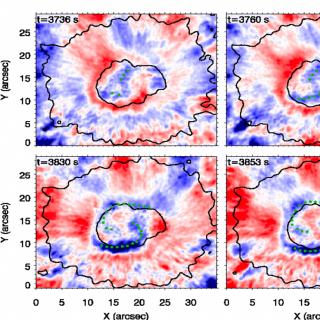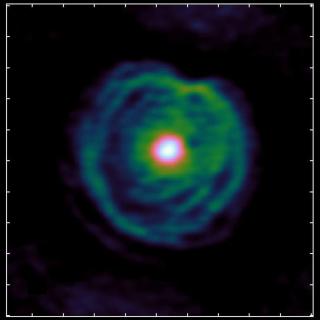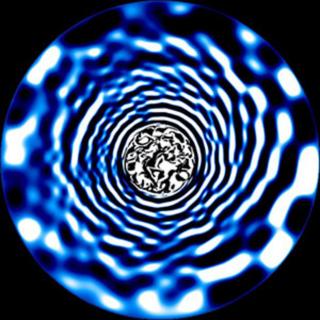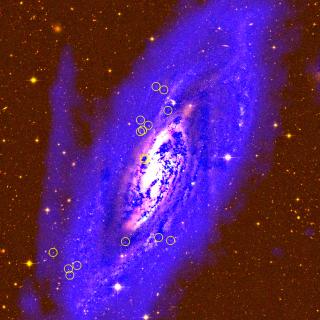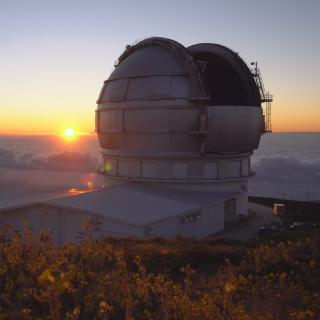![LithiumJ0023-1 Li abundance, A(Li), versus metallicity, [Fe/H], of the extremely iron-poor dwarf star J0023+0307 compared with other dwarf stars (logg ≥ 3.7) with Li abundance values from Bonifacio et al. (2018) and references therein. Blue filled circles connected with a solid line indicates the spectroscopic binary systems in González Hernández et al. (2008) and Aoki et al. (2012). The Lithium “plateau” (also called Spite Plateau) reference is shown as a solid line at a level of A(Li) = 2.20 dex. Blue dashed line repres](/sites/default/files/styles/crop_square_2_2_to_320px/public/images/news/Webp.net-resizeimage_0.jpg?h=3a83f40c&itok=6Mc41wBT)
We present an analysis of the UVES high-resolution spectroscopic observations at the 8.2m VLT of J0023+0307, an extremely iron-poor dwarf star. We are unable to detect iron lines in the spectrum but derive [Fe/H]< −6.1 from the Ca II resonance lines assuming [Ca/Fe]=0.40. The chemical abundance pattern of J0023+0307, with very low [Fe/Mg] and [Ca/Mg] abundance ratios, but relatively high absolute Mg and Si abundances, suggests J0023+0307 is a second generation star formed from a molecular cloud polluted by only one supernova in which the fall-back mechanism played a role. We measure a carbon
Advertised on
